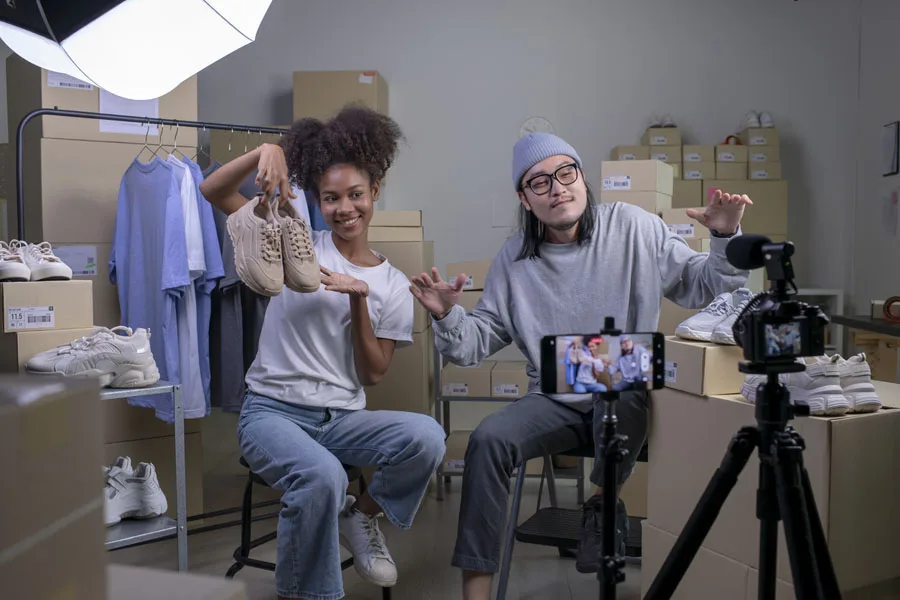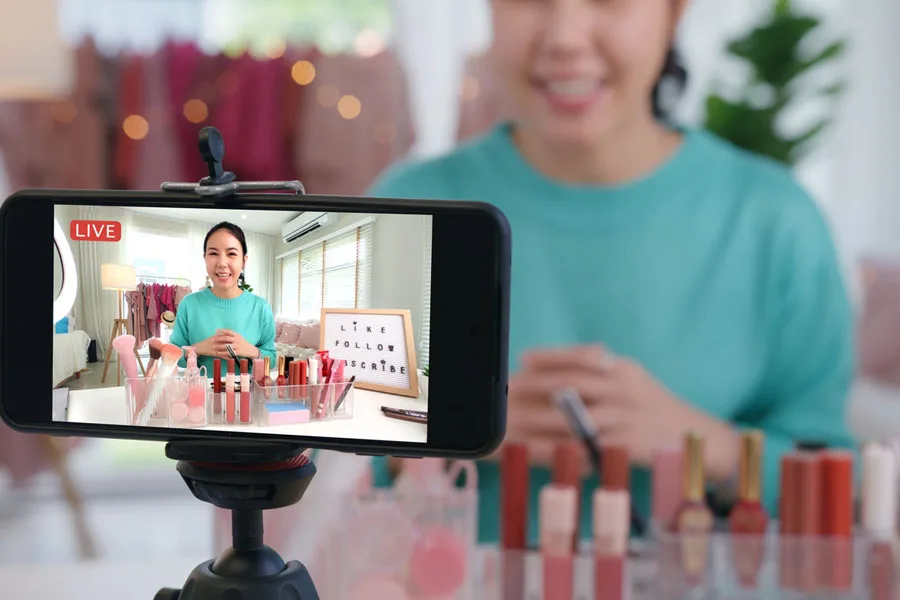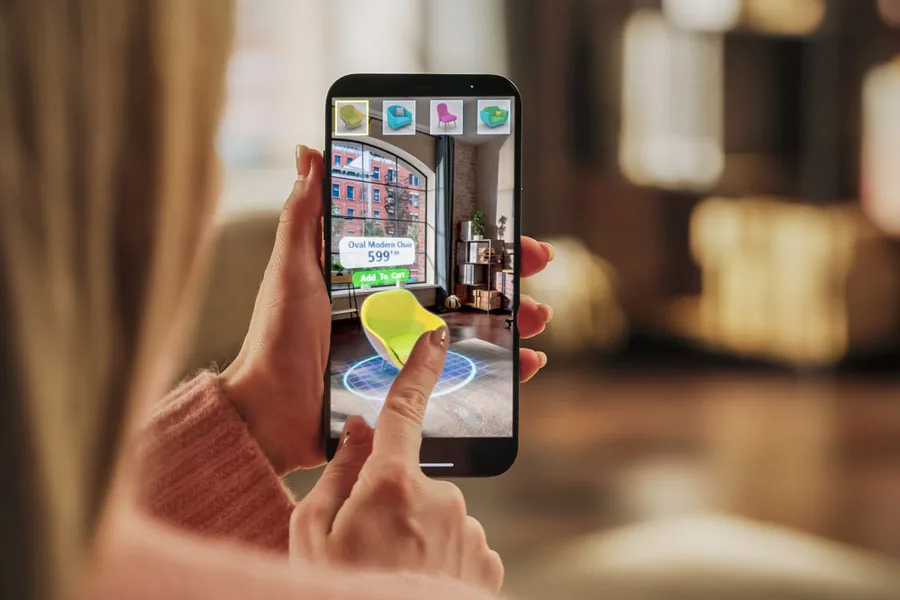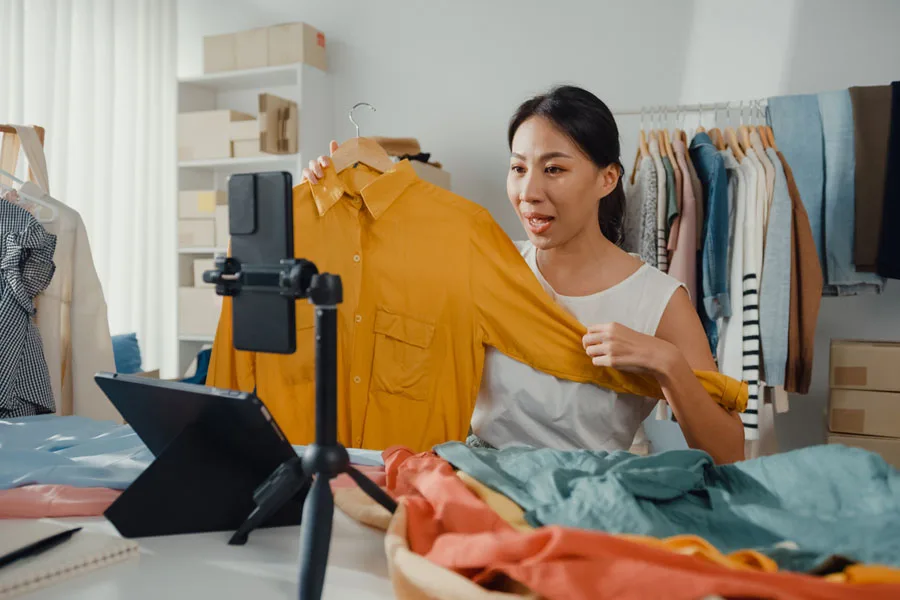The coronavirus pandemic led to new retail trends, one of which is live shopping. Today, live shopping is not just a strategy but a necessity for businesses prioritizing high engagement and conversion rates.
As a business owner using live shopping to make sales, staying abreast of the latest market trends should not be ignored. In 2024, new trends are developing to transform live shopping experiences, thanks to new technologies, social media, and ever-changing consumer behavior. Therefore, this article will explore live shopping, analyze its growth, and identify the top five trends that will rule the market this year. Let’s get started.
Table of Contents
What is live shopping?
Understanding the rise of live shopping
5 trends shaping live shopping in 2024
Pros and cons of live shopping
Conclusion
What is live shopping?

Live shopping, also known as livestream shopping or live commerce, is a form of online shopping that allows customers to engage directly with sellers and products in real-time.
Unlike traditional e-commerce, where buyers scroll through static product catalogs, it utilizes video streaming technology, creating an engaging and interactive environment for shoppers.
E-commerce businesses, therefore, can leverage live commerce to demonstrate their products to customers, address their concerns in real-time, and obtain instant feedback while viewers watch the live broadcast.
Understanding the rise of live shopping

Live shopping has come a long way since its early days on home shopping channels in the 1980s and 1990s. However, the recent rise of influencer culture and mobile technology has launched live shopping into a new era.
In 2022, live shopping generated over US $17 billion in sales in the United States. That figure is expected to rise to US $55 million by 2026. Live shopping has also garnered over 50,000 livestreams with at least 260 million daily viewers across platforms.
The development has been further fueled by the need for businesses to provide clients with a better and more individualized online shopping experience.
Social media networks and new technologies such as AR and machine learning have made live shopping a potent resource brands can use to access and sell to their targeted audience. As we look into 2024, there are several trends to expect, which we will discuss in the next section.
5 trends shaping live shopping in 2024
1. Integration of social media platforms

One of the key trends set to become a game-changer in 2024 is integrating social media with live shopping platforms. Social commerce, an amalgamation of social media and e-commerce, is witnessing a growth in popularity, and businesses are taking advantage of vast user bases like Facebook, Instagram, LinkedIn, TikTok, and YouTube to host live shopping events.
For instance, Walmart often hosts its livestream shopping events on TikTok for its loyal customer base. KitKat has also achieved massive sales success through its livestream selling efforts on Facebook.
Widened reach is not only the benefit gained from social media integration; it also allows for seamless sharing and promotion of products. Expect more brands to invest more in creating a cohesive shopping experience across different social media channels this year.
2. The power of influencer marketing

Another trend for 2024 is influencer marketing, which has become an integral part of live shopping strategies. Many brands collaborate with influencers to host live shopping events, tapping into the influencers’ loyal follower base. In addition to adding authenticity to the live shopping experience, it also enhances brand trust.
As influencers showcase and recommend products in real time, customers are more likely to make informed purchasing decisions. An example is NYX Cosmetics‘ live shopping experience, in which influencers Lance Bass, JoJo, and Brandy recreated 2000s looks on Triller. Through these pop celebrities, the target audience, mainly millennials and Gen Z, who typically spend more, got directed to the NYX shopping page to make a purchase.
Therefore, combining influencer marketing with live shopping creates a potent formula for driving sales and increasing brand visibility. That’s according to market analysts, who reveal that influencer marketing can increase sales conversions by between 1% and 5% and brand visibility by 82%.
3. The rise of mobile shopping

The ubiquity of mobile devices continues to shape consumer behavior, and live shopping is no exception. In 2024, the rise of mobile shopping during live events is expected to skyrocket.
This is because today’s consumers quickly turn to mobile phones to access a retailer’s website or mobile apps. According to a 2023 study by Airship in conjunction with Sapio Research, nearly 80% of consumers use e-commerce websites to purchase products, while 78% use a retailer’s app.
With most consumers accessing social media and online stores through their mobile devices, businesses can capitalize on this trend by optimizing live shopping experiences for smaller screens.
Another tip is to provide seamless mobile payment options for added convenience. These checkout options may include WeChat Pay, AliPay, Apple Pay, PayPal, or buy now, pay later at checkout. By doing so, they not only cater to users’ convenience, but also reflect their efforts to shift toward a more mobile-centric e-commerce landscape.
4. Personalized shopping experiences

AI and machine learning are playing a pivotal role in tailoring live shopping experiences to individual preferences. It’s because more customers are looking for a more personalized shopping experience. A Treasure Data and Forbes study revealed that 74% of buyers make purchases based solely on user experiences.
In 2024, businesses are set to leverage advanced algorithms to analyze customer data and provide personalized product recommendations during live events. For example, THE YES, a shopping app for fashion brands, uses a sophisticated algorithm to create and deliver a personalized store for every customer based on their style preferences, size, and budget.
This enhances customer satisfaction while increasing the likelihood of successful conversions. The ability to customize the shopping journey based on past purchases, browsing history, and preferences creates a more engaging and relevant experience for consumers.
5. Emergence of virtual reality shopping

Virtual reality (VR) is stepping into live shopping, offering customers futuristic and immersive experiences. Brands like Gucci, Nike, and Adidas are already integrating VR technologies into their livestreams, whereby audiences can virtually explore clothing and shoes and interact with them in a three-dimensional space.
VR technology has its benefits, which include providing a novel and entertaining experience as well as addressing the limitations of traditional online shopping, such as giving customers a closer look at products before making a purchase. As VR technology advances, it is likely to redefine the landscape of live shopping, offering a new dimension to the e-commerce experience.
Pros and cons of live shopping
While live shopping brings forth exciting opportunities for brands and consumers alike, it is crucial to consider the advantages and disadvantages.
Pros

- Engaging experience: One of the benefits of live shopping is that it provides a highly engaging and interactive experience that fosters a closer connection between brands and customers.
- Real-time interaction: Live commerce allows brands to engage with buyers in real time, allowing them to answer queries, showcase product features, and build trust.
- Increased conversions: A study found that live shopping can increase conversions by up to 76%. The dynamic nature of live-stream shopping boosts conversions since buyers can make purchasing decisions on the spot.
Cons
- Technical challenges: Technical glitches or connectivity issues may occur during a live stream, ruining a buyer’s experience.
- Limited timeframe: Live shopping events often have limited timeframes, making it essential for brands to convey their message and showcase their products efficiently.
Conclusion
To sum up, live shopping stands at the forefront of e-commerce trends, offering businesses a unique opportunity to connect with consumers in real-time. Key trends like influencer marketing, mobile commerce, social media integration, VR, and personalized experiences will transform the live shopping landscape in 2024. Businesses that take advantage of these trends in their sales and marketing strategies will be at the forefront of gaining e-commerce success in the years to come.





 বাংলা
বাংলা Nederlands
Nederlands English
English Français
Français Deutsch
Deutsch हिन्दी
हिन्दी Bahasa Indonesia
Bahasa Indonesia Italiano
Italiano 日本語
日本語 한국어
한국어 Bahasa Melayu
Bahasa Melayu മലയാളം
മലയാളം پښتو
پښتو فارسی
فارسی Polski
Polski Português
Português Русский
Русский Español
Español Kiswahili
Kiswahili ไทย
ไทย Türkçe
Türkçe اردو
اردو Tiếng Việt
Tiếng Việt isiXhosa
isiXhosa Zulu
Zulu